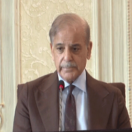By Nadir Cheema
Published in Dawn on February 02, 2023
THE word ‘default’ (or its less pejorative technical equivalent, ‘restructuring’) sends shivers down the spines of our policymakers and citizens alike. It shouldn’t. Sovereign default, in an economic sense, means a government reneging on its obligations. Per this meaning, almost all governments of the world have indulged in some form of default in their history.
Surprise inflation can materially erode the real value of local currency bonds; and governments can dramatically reduce the quantity and quality of public services they provide to citizens. Both are examples of ‘soft’ default, even though their effects may be far from soft.
The difficulty, it is said, is with ‘contractual’ default, or ‘debt restructuring’, ie, the government telling its creditors it cannot pay per the terms of the original debt contract. Surprise, surprise.
This is exactly what we have been doing with our official creditors for 15 years, telling China and the Gulf states every five years that we have run out of capacity to repay so they should extend/rollover their loans to us. True, we have pre-empted contractual default because these ‘friendly countries’ have bailed us out, but let there be no illusion that these were, de facto, debt restructurings.
But what is really scary, they will say, is the spectre of contractual default on ‘commercial’ external debts, ie, Eurobonds/Sukuks issued in London or New York, and syndicated loans from global banks. If this were to happen, we would lose access to international capital markets, be forced into autarky, and reach the end of our sovereign existence!
Four myths drive this oversimplified narrative.
The biggest impediment to sovereign debt restructurings is not economic but political.
Myth 1: Avoiding restructuring is always the best course of action. This is akin to saying we should never prefer surgery over medication. However, Pakistan’s ailing economy — with less than a month’s reserves left, a currency in free fall, and a mountain of debt payments ahead — has reached that point where medication (policy adjustment) alone cannot cure it.
It needs surgery (a major renegotiation of its debt burden with creditors), and policymakers should focus on how to go about this in an orderly manner rather than expending energy on gimmicks to avoid it, which will only deepen the pain and force a more difficult renegotiation later.
Myth 2: Our access to external credit markets depends on how current we are on our commercial external debt. The truth is our international market access is tied to our perceived creditworthiness in a forward-looking sense (will you or I ever lend new money to a broke debtor who we know has run down all his cash buffers to pay us our previous debt and has other massive debts still to pay?).
Our current predicament speaks exactly to this: we ludicrously avoided restructuring $2 billion worth of Eurobond and syndicated loan maturities in the last two months, despite precariously low reserves. Expectedly, this did nothing to reduce our credit spreads; avoid rating downgrades; or prevent import letters of credit from being denied.
Conversely, if we had announced that we would restructure (rather than pay) these debts in an orderly manner, we might have been put into selective or partial default by rating agencies, but we would have emerged stronger in a year’s time (ie, after completing the renegotiation with creditors); importantly, we would have conserved precious foreign reserves, and the policy space they provide.
Myth 3: Commercial debt constitutes a tiny fraction of our total public external debt, so there is not much benefit (in terms of conserving foreign exchange reserves) from restructuring it. The truth is that how we handle our commercial external creditors matters a great deal for the debt relief we can get from our official creditors.
The last thing the IMF or the Chinese want is to see the money they provide to us go straight out to paying our commercial creditors. A restructuring of our external commercial creditors would not only be welcomed by other creditors (from a burden-sharing perspective), but it will also position us to secure meaningful debt relief from official creditors (akin to the 20-year rescheduling we received from the Paris Club in 2001).
Myth 4: We will lose access to financing from the IMF and other international financial institutions if we restructure our external commercial or bilateral debts. The truth is that many restructuring efforts result in pre-emptive renegotiations, ie, without the country going into arrears with its bilateral and commercial creditors (eg, Greece 2012, Ukraine 2015, and Argentina 2020). But, even if arrears arise in the course of the restructuring process, the IMF has rules empowering it to ‘lend into arrears’ as long as we are asking our creditors for a quantum of debt relief considered reasonable by the IMF. And if the IMF is engaged, so will other IFIs be.
The combined new financing from these institutions, together with the rescheduling of commercial and bilateral debt payments, will give us enough reserve buffers to support a healthy level of trade even without international market access (which might take two to three years to regain).
The biggest impediment to sovereign debt restructurings is not economic but political. Politicians do not mind begging for bailouts from official creditors (often, in exchange for massive foreign policy favours) but fear that a legal contract renegotiation will equate to incompetent economic management. Thus, governments inevitably ‘gamble for resurrection’, indulging in ‘too-little-too-late’ tactics, as we have regrettably seen in Sri Lanka. We too are ‘late’ — I had made a case for a debt reprofiling in 2018 to help conserve vital policy space.
The debt restructuring ahead, which I see as inevitable, will now need to be deep and comprehensive. But if it is done as part of a credible process, supported by the IMF, it can grant us significant policy space over the medium term. There is no time to waste.






